Saturday, the 24th of March
We did another excursion from Tbilisi, this time to David Gareja. Founded by an Assyrian dude (David) that came to Georgia to christianize some pagan Georgians, this complex of monasteries (15 at its peak!) had its highs and lows. Since the end of the Soviet Union, some have been reoccupied, but it’s still a remote and really quiet location, as proven by the 30 kms of unpaved road to get there.
First we drove by Rustavi, a place where the old Soviet factories are still (more or less) running:
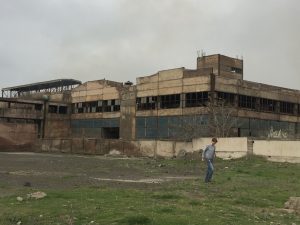
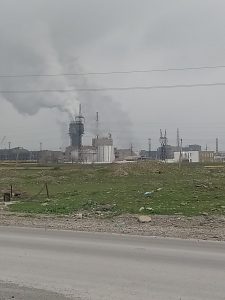
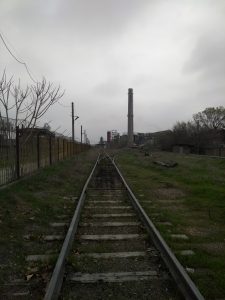
After which we drove for kilometers on end through… nothing:
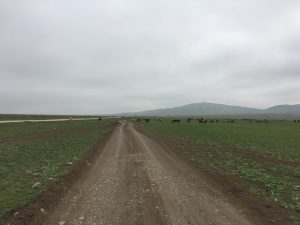
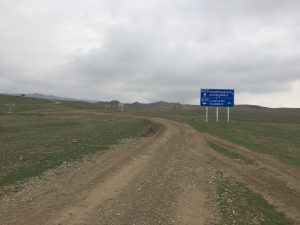
(That sign says: ‘go left for nothing, or continue straight on for more nothing’.)
In the end, it was worth it though. The most impressive monastery at David Gareja is called Udabno, and consists of a series of (half destroyed) caves hewn into a hillside, covered in beautiful 1000 year old frescoes (I just googled how to write ‘frescoes’):
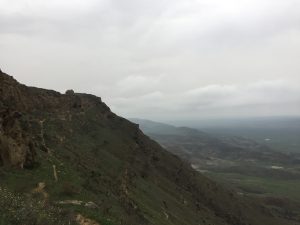
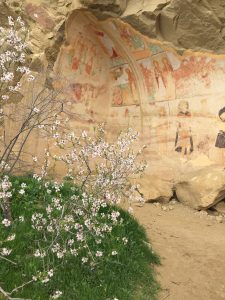
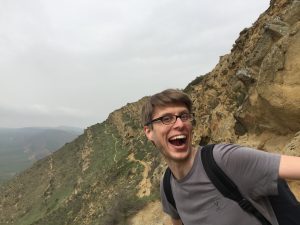
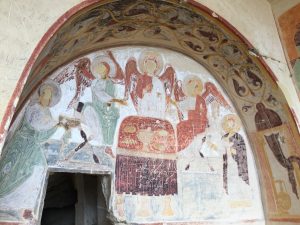
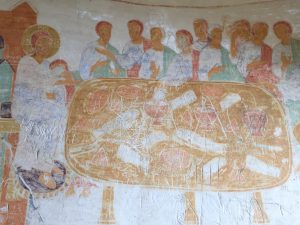
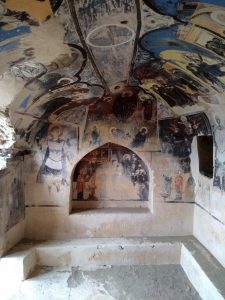
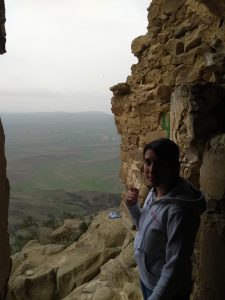
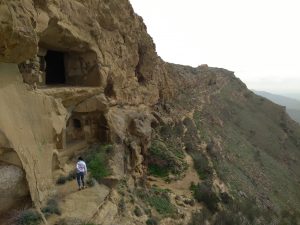
While we were up there, we also had 2 random encounters: first, with a really big eagle. It soared only 10 to 20 meters above us. Sadly, we were unable to take a picture, but you can see Tom’s WOW-face here:
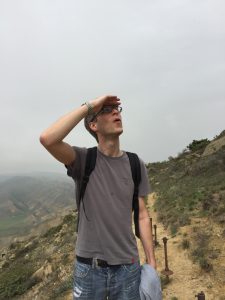
(That’s a clear WOW.)
Encounter number 2 was with 2 Azeri border guards that were patrolling the area. Apparently, this patch of land on the Georgia – Azerbaijan border is stil disputed. We asked nicely to take a picture with them, but received a clear no, and left it at that.
Sunday, the 25th of March
On Sunday we drove to Armenia, while passing by the monastery complex of Vardzia (another one, yay!).
Vardzia was once home to over 6000 monks, in 400 rooms, 13 churches… Sadly, war, earthquakes and the Soviet Union managed to empty it. Recently, it has been reoccupied by a few monks. Seeing the views, you’ll understand why:
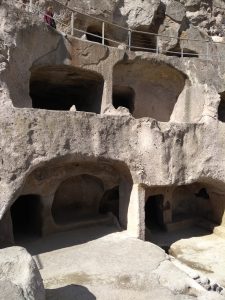
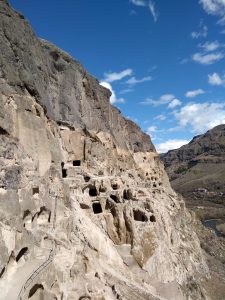
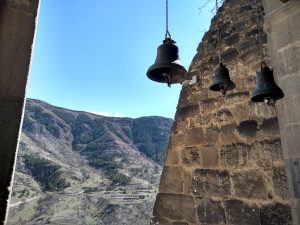
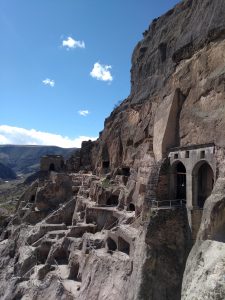
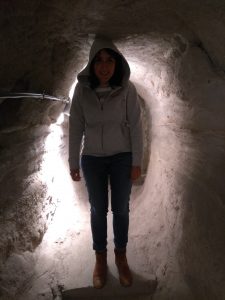
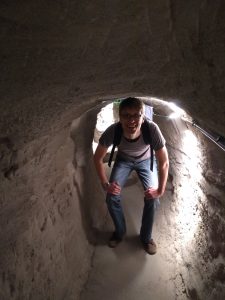
Sadly though, Wafa sprained her ankle while walking around here. Still, it didn’t seem too bad, so we set out for the Armenian border. After driving on some of the worst roads so far (mud and potholes the size of a bath tub), we arrived in Armenia. After paying for local insurance, a car importation tax and even an emission tax (only 27€ in total), Northern Armenia looked like this:
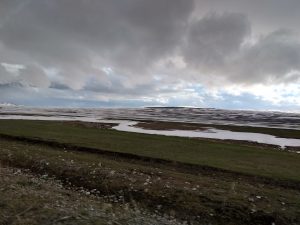
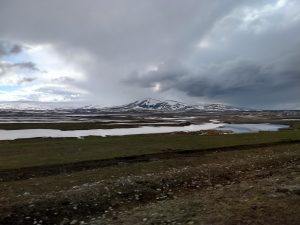
(Much of the North looks like this: a snowy, wet, highland plateau (over 2000 m).)
By the time we arrived at our guesthouse, Wafa’s ankle really starting hurting. Luckily, our hostess, Raissa, had some Armenian medicine ready. First, she applied a slathering of toothpaste, which was left to dry for a few hours:
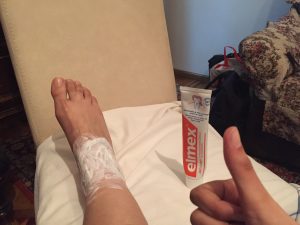
After washing this off, she soaked some durum bread in vodka, which was then applied to the ankle in question. Held in place with plastic foil and a big sock, Wafa spent the night like this:
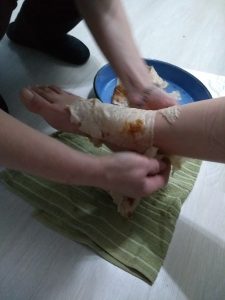

(Shame about the vodka…)
Next morning, most of the pain was gone!
Monday & Tuesday, the 26th and 27th of March
Monday and Tuesday were spent in the North of Armenia and Yerevan, the capital. There’s nothing much to say here, as both didn’t really appeal to us.
Apart from some nice views and loads of monasteries, the North doesn’t really offer much. Also really poor, as this area never really recovered from a big earthquake in 1988, combined with the fall of the Soviet Union.
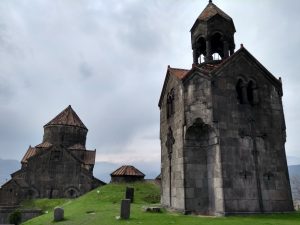
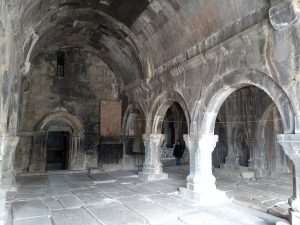
(Up: Haghpat monastery. Under: Sanahin monastery.)
Unlike Tbilisi, Yerevan wasn’t really inviting. Much of the center has been rebuilt in recent years, leaving you with the impression it lacks a soul. Just our opinion, of course. We did visit the National History Museum of Armenia, though, which had a really nice Bronze Age collection (sadly, no photos were allowed to be taken.) Also learned a lot about the Armenian Genocide of the early 20th century. The tragic history of the Armenian people is also captured by the fate of Mount Ararat (the one from the Bible – Ark of Noah). Historically, this mountain formed part of the Armenian heartland. In the struggle between the Russian and Ottoman empire, however, Armenia got divided, so that Mount Ararat is now in modern Turkey, but always looming over a large part of Armenia. We could actually see it from our guesthouse balcony in Yerevan:
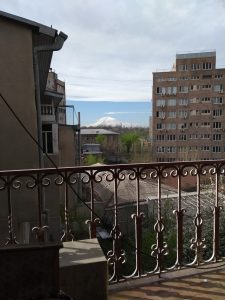
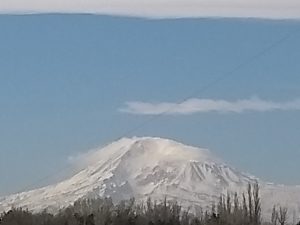
Also worth a mention is the Geghard monastery, in the vicinity of Yerevan. Really dark and foreboding atmosphere:
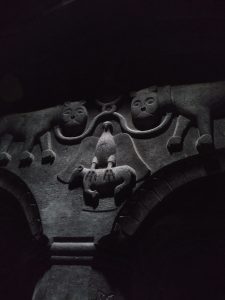
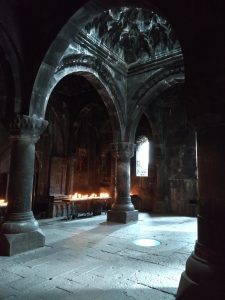
Wednesday, the 28th of March
We started travelling further south, passing by Lake Sevan, a huge lake on the eastern side of Armenia. Worth mentioning here are the kachkars of Noratus. Kachkars are a sort of memorial stone, only found in Armenia, often with inscriptions on the person they’re commemorating. Noratus has the largest collection of them, about 800 in total, some dating from as far back as the 9th century. Kind of looks like a cemetery:
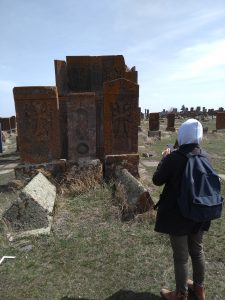
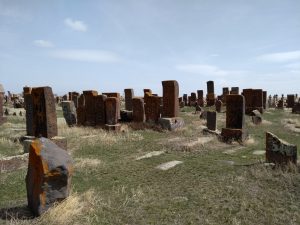
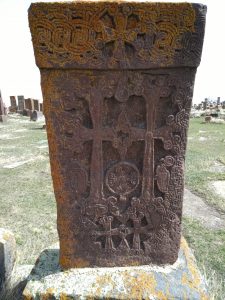
After passing over the Selim pass, we came across our first caravanserail of the Silk Road! Finally, a connection! This hall, dating from 1332, offered refuge to weary merchants and their draught animals. Even after almost 700 years (at 2400 meters!) it still looks magnificent:
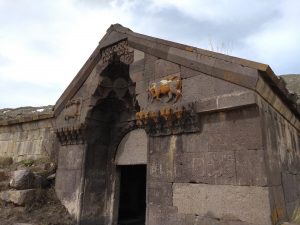
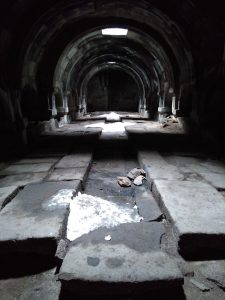
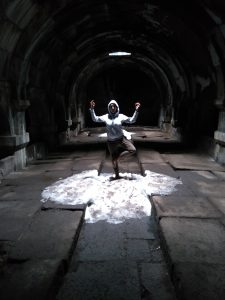
While up there, we also met Armin, who was selling his self-produced wares (still merchants on the Silk Road!):
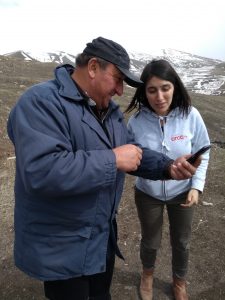
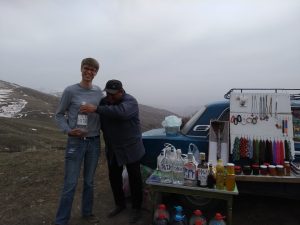
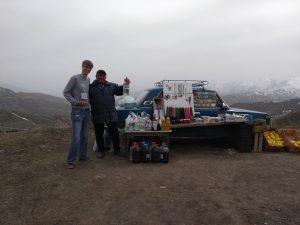
After tasting some of his 60% homebrew vodka, we suddenly liked Armenia a whole lot more!
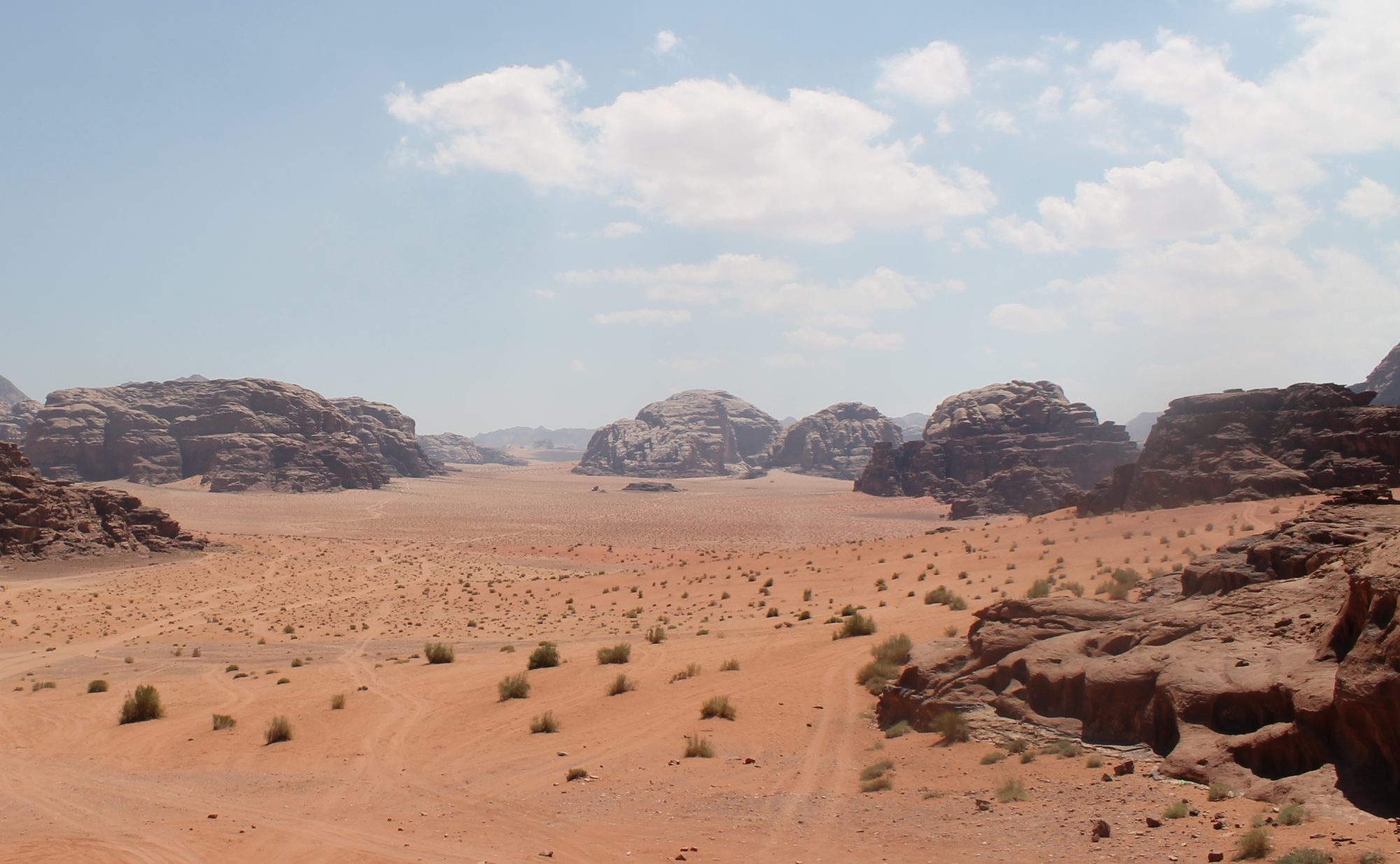
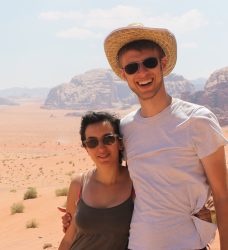
Oh pauvre Wafa le pied gonflé car tu marché beaucoup et visite beaucoup super, wafa et tom couragent ok lolllll
Wat een plezier om jullie verslagen te lezen! 🙂
Wafa a même emporté son pull Arcq 😂😂👍
tu me connais… j’emmène mon travail partout où je vais 😉
in the lugage of dady deze handel plz
:p
Ik kijk telkens vol verwachting uit naar het volgende verslag!! Veel plezier!!!
(Waar blijft dat verslag van Iran😄??)